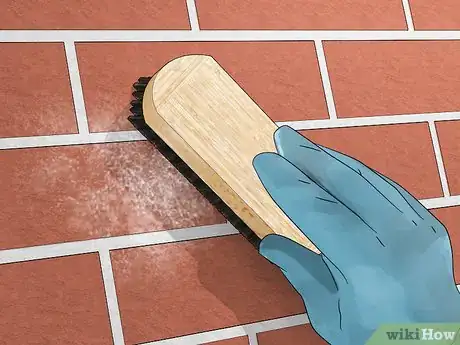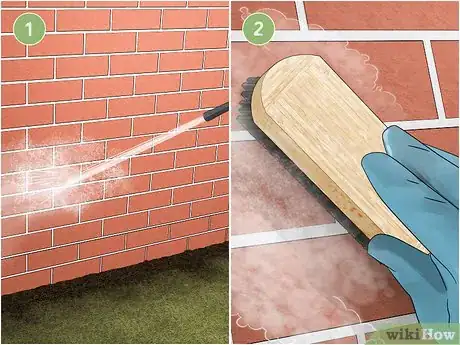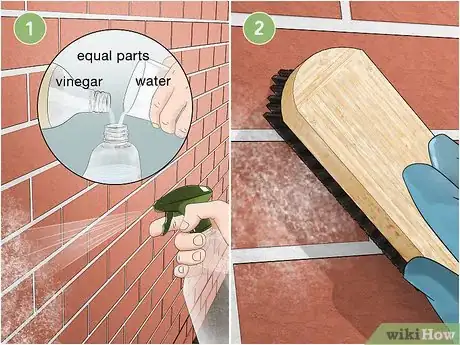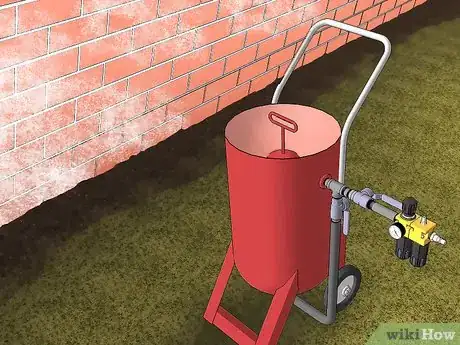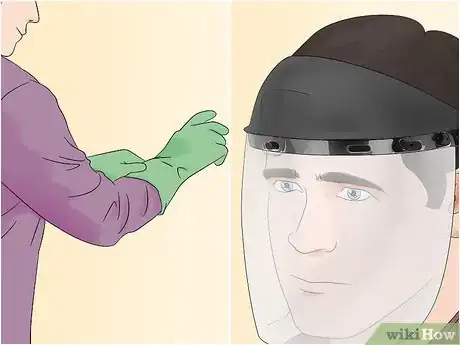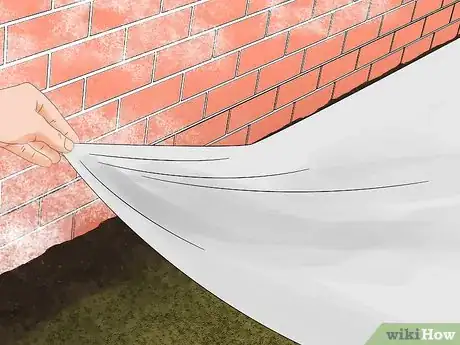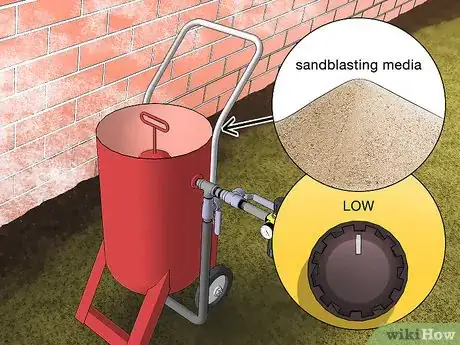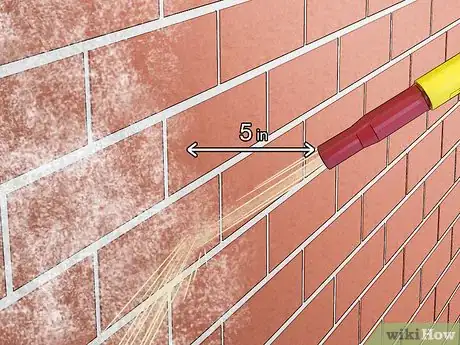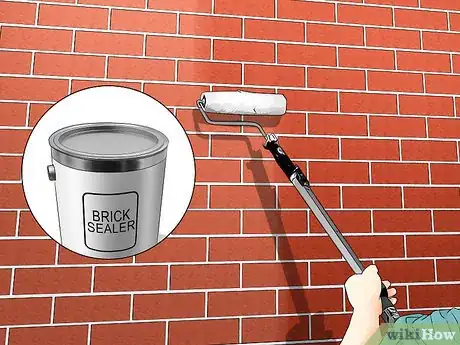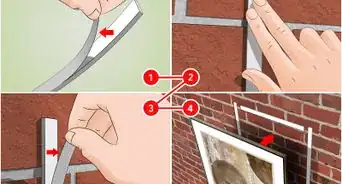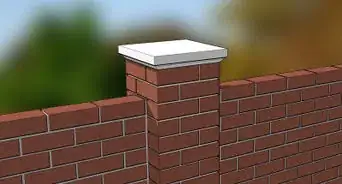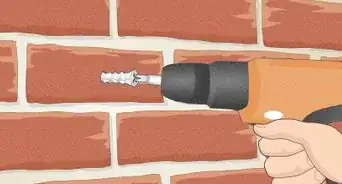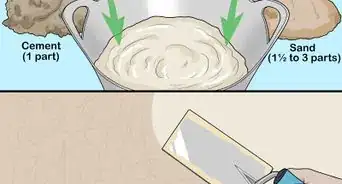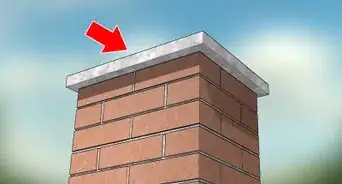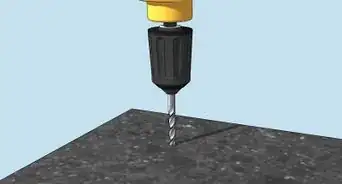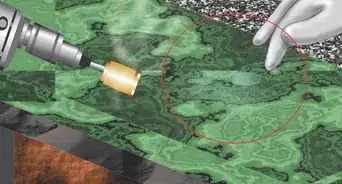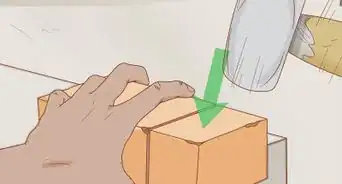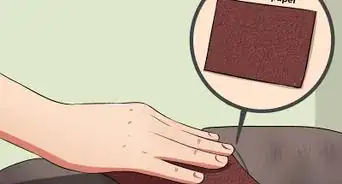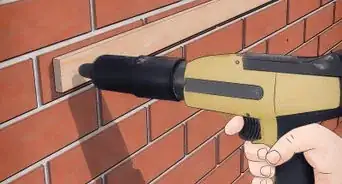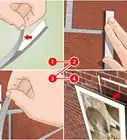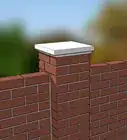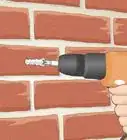This article was co-authored by Melanie Garcia. Melanie Garcia is the Co-Owner of Oranges & Lemons, a small, family cleaning business based in Downtown Los Angeles, California (DTLA) in operation for over 40 years. Oranges & Lemons operates while partnering with the National Domestic Workers Alliance and Hand in Hand: Domestic Employers Network.
There are 8 references cited in this article, which can be found at the bottom of the page.
This article has been viewed 59,575 times.
Efflorescence is the result of water soluble salts building up over time on the porous surface of bricks. It isn't harmful to the bricks, it just doesn't look good. Efflorescence is easily removed if you catch it right away. Using a stiff scrubbing brush, most of it will easily come off. Add water and vinegar or muriatic acid for a stronger solution. Although it is abrasive, sandblasting also works to get rid of tough cases of efflorescence. However, this will also wear away the brick, so be sure to seal it with a waterproofing material after you are done.
Steps
Scrubbing Brick with a Cleaning Solution
-
1Use a dry, stiff brush to scrub the powder off of the brick. In mild cases, efflorescence can be removed just by brushing the dry surface. Use stiff-bristled nylon brush or a wire brush to scrub the brick surface.[1]
- Using a dry brush is most effective if the efflorescence is only in small patches.
- It's good to avoid water if you can help it, since water is what causes efflorescence.
-
2Use water and mild detergent to scrub the surface of the brick. For exterior walls, use a garden hose to spray the efflorescence with water.[2] For interior surfaces, use a spray bottle filled with water to wet the surface. Then, use a stiff brush and mild dish detergent to scrub away the powder. Rinse the soap off with fresh water.[3]
- Once the brick is dry, check to see if the efflorescence is gone. If it isn't, you may need to repeat this or try a stronger cleaning solution.
- When treating an outdoor wall, make sure the temperatures will be above freezing all day.
Advertisement -
3Spray a solution of vinegar and water on the brick and scrub it with a brush. Mix equal parts of water and white vinegar in a spray bottle. Spray the solution onto the surface and let it sit for 5 minutes. Then, spray the bricks with the mixture again and use a stiff brush to scrub away the efflorescence. Scrub in small, circular motions before rinsing the surface with fresh water.[4]
- Vinegar can be abrasive on old bricks. Use a different solution if your bricks are more than 20 years old.
- You can neutralize the acidity of vinegar by mixing a solution of 2-3 tablespoons (30-45g) of baking soda with a spray bottle full of water. Spray the solution onto the bricks you treated with vinegar.
-
4Use a mixture of muriatic acid and water to get rid of tough efflorescence. A mixture of 1 part muriatic acid and 12 parts water is very effective at removing efflorescence. Presoak the wall with fresh water, then apply the acid mixture using a brush. Let the mixture soak into the brick for about 5 minutes. Then, rinse the brick surface with plain water.[5]
- Wear rubber gloves, safety goggles, and a respirator when working with acid.
- When mixing the solution, always pour acid into water, never water into acid.
Using a Sandblaster to Remove Stubborn Efflorescence
-
1Use a sandblaster for tough cases of efflorescence. A sandblaster will wear away the surface of the bricks, so you should only use one if you have already tried a gentler method of removing efflorescence. A sandblaster will remove more buildup, but will also make bricks more susceptible to efflorescence later.[6]
- Avoid sandblasting brick older than 20 years. This causes more harm than good.
-
2Protect your eyes and skin before using a sandblaster. Sandblasters can cause projectiles of stone, wood, or anything the machine hits to fly back towards you. Wear a face shield with a hood and cover your skin with long sleeves and pants. Wear boots and rubber gloves to protect your hands and feet.[7]
- It's dangerous to breathe in the debris caused by sandblasting. Make sure your face, especially eyes, nose, and mouth, are completely covered.
-
3Protect delicate greenery nearby with dropcloths. Use duct tape to secure dropcloths over anything you don't want damaged by the potential flying brick. This can include any shrubbery, gardens, electrical outlets, or light fixtures.[8]
- Alternatively, use plastic sheeting to cover anything you don't want damaged.
-
4Fill the blasting bucket with media and use the lowest pressure setting. Use fine sandblasting media for the safest results. Set the sandblaster to the lowest pressure setting to avoid damaging the bricks.[9]
- The lowest pressure should be strong enough to remove efflorescence, but if it isn't, turn the pressure up a little bit at a time.
-
5Aim the blasting gun at the bricks from at least 5 inches (13 cm) away. Turn the blaster on and use it to wash away the efflorescence from a distance of at least 5 inches (13 cm). Go back and forth across the bricks using smooth, horizontal movements.[10]
- If you don't feel comfortable using a sandblaster on your own, a contractor should be able to take care of it.
-
6Seal the brick with waterproofing material to prevent efflorescence. Some sealants need to be applied with a spray bottle, while others can be painted on with a brush or roller. Use a sealant specifically made to keep efflorescence off of bricks. This is especially important after sandblasting, as the process will wear away the protective surface of the bricks.[11]
- Apply the sealant from the bottom of the wall, up.
- Keep your plants, windows, and electrical appliances covered up with dropcloths while you are applying the waterproofing material.
Things You'll Need
Scrubbing Brick with a Cleaning Solution
- Stiff scrubbing brush
- Garden hose or spray bottle
- Dish detergent
- White vinegar
- Muriatic acid
Using a Sandblaster to Remove Stubborn Efflorescence
- Sandblaster
- Sandblasting media (fine)
- Dropcloths
- Duct tape
- Protective clothing
- Waterproofing sealant
References
- ↑ https://www.masonryinstitute.org/pdf/612.pdf
- ↑ Melanie Garcia. Professional House Cleaner. Expert Interview. 10 October 2019.
- ↑ https://www.masonryinstitute.org/pdf/612.pdf
- ↑ https://www.apartmenttherapy.com/how-to-clean-a-brick-fireplace-with-all-natural-cleaners-apartment-therapy-tutorials-216668
- ↑ https://www.bobvila.com/articles/how-to-clean-brick/
- ↑ https://www.masonryinstitute.org/pdf/612.pdf
- ↑ https://thecraftsmanblog.com/the-dangers-of-sandblasting-old-brick/
- ↑ https://thecraftsmanblog.com/the-dangers-of-sandblasting-old-brick/
- ↑ https://youtu.be/3sMhRP3Awnw?t=50
